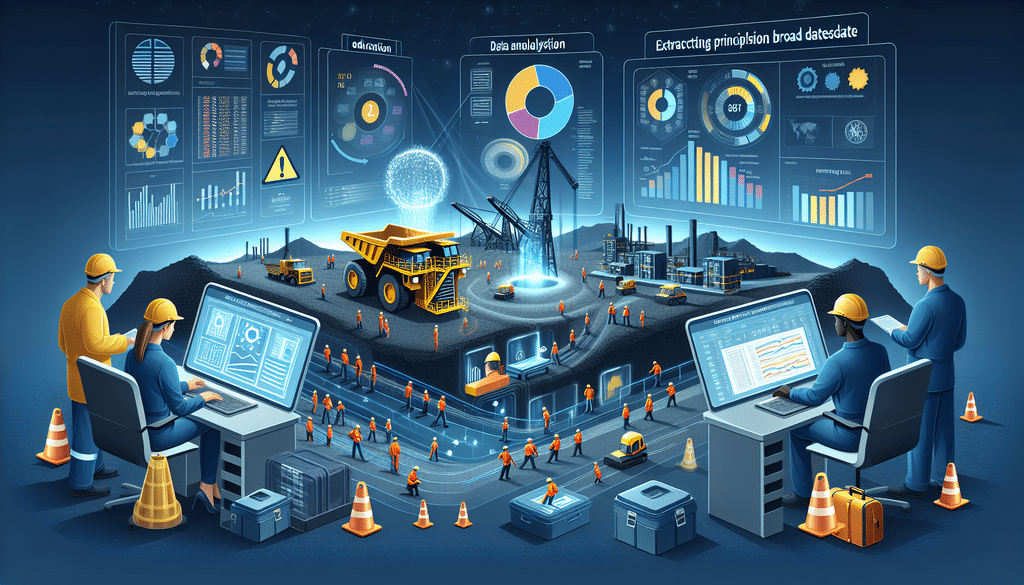The mining industry has long been viewed as one of the most hazardous professions. However, with the advent of technology and data analytics, the sector is experiencing a significant transformation. Big data analytics is emerging as a powerful tool for enhancing mining safety, providing invaluable insights that can lead to reduced accidents and improved overall safety performance.
The Importance of Safety in Mining
Mining involves various risks, from equipment malfunction and geological instability to exposure to harmful substances. The importance of safety in this field cannot be overstated. The repercussions of a mining accident can be devastating, affecting not only workers but also the environment and communities surrounding mining operations.
Statistics Highlighting Mining Risks
- According to the Mine Safety and Health Administration (MSHA), there were over 2,100 accidents reported in the U.S. mining sector in 2022.
- Fatalities in mining, although on a decline, stand at an average of 15 per year in the U.S. alone, according to MSHA data.
- Mining is up to 18 times more dangerous than the average American job, as indicated by various industry studies.
The Role of Big Data in Enhancing Safety
Big data refers to large volumes of data generated from various sources, which can be analyzed to reveal patterns, trends, and associations. The mining sector is tapping into big data to make informed decisions, and several facets of mining safety are benefiting from this approach:
1. Predictive Analytics
One of the most significant applications of big data in mining safety is predictive analytics. This involves analyzing past incidents and data to predict future occurrences. By identifying patterns in accidents, companies can develop strategies to mitigate risks. For instance:
- Data on equipment wear and tear can help predict failures and schedule preventive maintenance.
- Real-time monitoring of geological conditions can alert miners to potential hazards before they escalate into accidents.
2. Monitoring Worker Health and Well-being
Mining environments can be harsh, and the health of workers is often at risk due to exposure to dust, noise, and other hazardous conditions. Big data allows for:
- Tracking health indicators such as heart rate and respiratory conditions using wearable technology.
- Analyzing collected data to offer personalized health recommendations and interventions for miners.
3. Enhanced Training Programs
Another impressive use of big data in mining safety is the development and enhancement of training programs. By analyzing incident reports and worker performance:
- Mining companies can identify common areas where employees struggle, leading to tailored training efforts.
- Simulations and virtual reality can be integrated into training to create real-world scenarios that miners might face.
Real-time Decision-Making and Communication
Quick decision-making in emergencies is crucial for mining operations. Big data analytics allows companies to:
- Implement real-time tracking of equipment and worker locations, improving coordination during emergencies.
- Utilize communication platforms powered by big data to enhance response times and streamline reporting procedures in case of incidents.
Case Studies: Success Stories in Mining Safety
Several mining companies are already seeing positive outcomes from incorporating big data into their safety frameworks. Here are a few noteworthy examples:
1. Rio Tinto
Rio Tinto has implemented a comprehensive big data approach, utilizing sensors and IoT devices throughout their operations. This initiative has resulted in a 30% decrease in equipment-related accidents through predictive maintenance and analytics-driven decision-making.
2. BHP Billiton
BHP has harnessed big data analytics to streamline their training programs. By analyzing past incidents, they develop targeted training for workers, resulting in a 25% reduction in safety incidents year on year.
Challenges to Overcome
While the benefits of big data in mining safety are immense, challenges remain:
- Data Integration: Many mines have legacy systems that make it difficult to gather and analyze data effectively.
- Privacy Concerns: Collecting data on workers’ health metrics can lead to privacy issues if not handled correctly.
- Cultural Resistance: Long-standing practices and resistance to change can hinder the effective adoption of data-driven safety strategies.
Future Trends in Mining Safety and Big Data
The future of mining safety will continue to evolve with advancements in big data technology. Here are some trends to watch out for:
- Artificial Intelligence: The integration of AI with big data will enable even more accurate predictive analytics and risk assessments.
- Increased Use of Drones: Drones will be increasingly used for real-time monitoring of mining operations, offering insights into hazardous conditions without compromising worker safety.
- Enhanced Wearable Technology: Future wearables will offer advanced monitoring capabilities, potentially alerting workers to dangerous conditions before they even realize it.
Conclusion
The mining industry stands on the threshold of a revolution driven by big data analytics. As technologies continue to advance, the potential to create safer working environments will expand dramatically. By embracing these changes and leveraging the power of data, mining companies can minimize risks, protect their employees, and foster a culture of safety and sustainability in their operations. The future of mining will not only be about resource extraction but also about harnessing technology for better outcomes—making safety a top priority.





